How Svitlana Bevza Turned Her Brand Into a (Very Chic) Symbol of Ukrainian Resilience
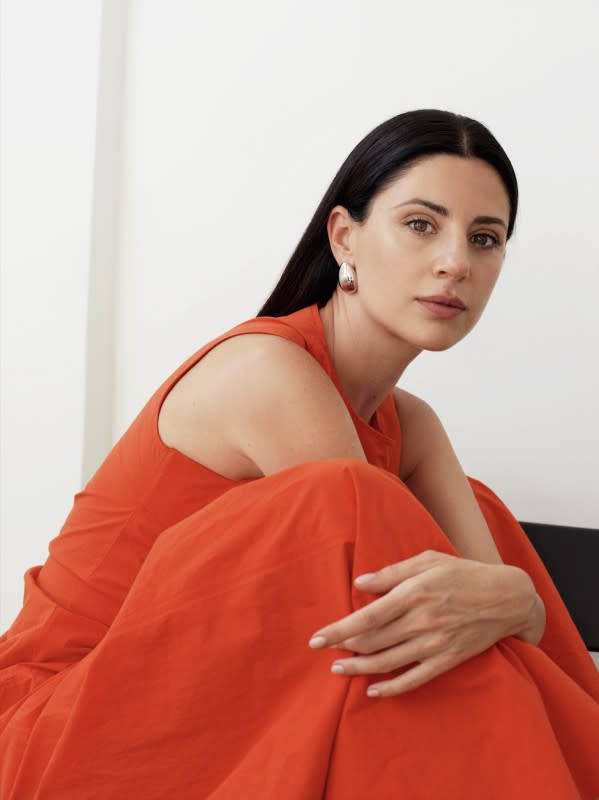
Photo: Courtesy of Bevza
In our long-running series "How I'm Making It," we talk to people making a living in the fashion and beauty industries about how they broke in and found success.
In what was then the USSR, a five-year-old Svitlana Bevza drew a picture of a house with a huge wardrobe, hangers and dresses. She showed it to her mom and said, "I want a fashion house."
"I literally thought at that time that it's an actual building, where girls get dressed, basically," Bevza tells me. "I still have this sketch. There are also beds, because they lived there."
Thirty-five years later, she's fulfilled her dream of running a real, successful fashion house — one that bears her name, but that she doesn't actually live in. It's become known for its sensual yet refined aesthetic and clean, sophisticated silhouettes.
However, her homeland, which became the independent State of Ukraine in 1991, has been a war zone since Russian military began invading in 2022. This is relevant because Ukrainian history is literally and figuratively woven into the fabric of the brand, which launched in Kyiv in 2006 and manufactures most of its products in the country.
Despite the unimaginable hurdles that war piles onto the already-challenging process of running a fashion business, Bevza is now only more clear in her vision and more empowered to keep going — a (very chic) picture of resilience.
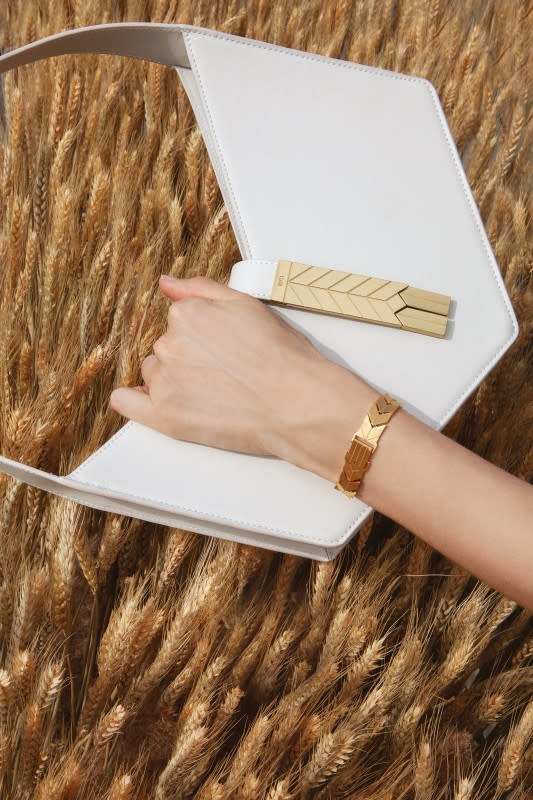
Bevza Spring 2024 handbag campaign. Photos: Courtesy of Bevza
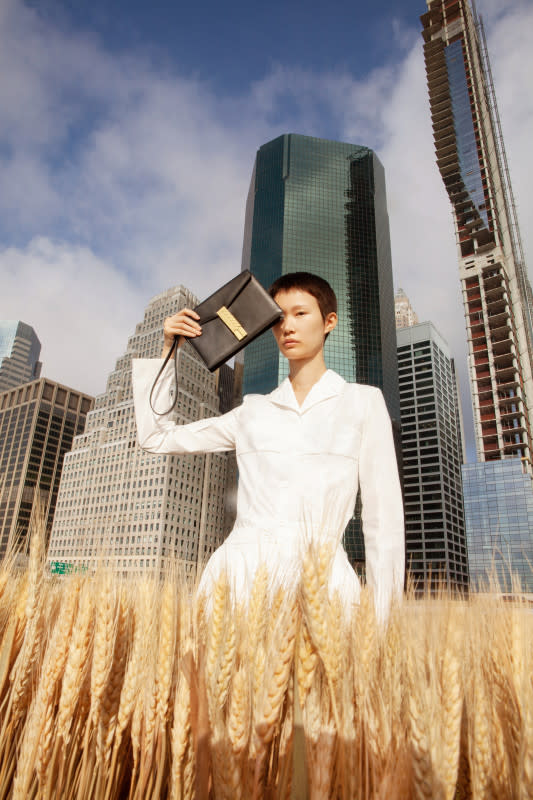
This is exemplified by the launch of and campaign for her debut leather handbag collection, which prominently feature wheat, of which Ukraine is a major exporter. The grain motif is also featured in jewelry and other products, and symbolizes Ukraine's continued defense of their land and ability to feed the world. The designer describes it as "sacred."
Amid the war, Bevza has relocated to London with her children. Her mother and husband remain in Ukraine (the latter to fight), as do other members of her team and much of the brand's manufacturing. Over Zoom, we discussed the Ukrainian fashion landscape; how she launched her brand; her decision to show at New York Fashion Week; how she's navigated the last few years and her hopes for the future of both her brand and her homeland.
How did you decide to pursue fashion as a career?
I was born and raised in Ukraine, and, at that time, there was no fashion industry at all. Even as a part of USSR and post-USSR, there was a deficit in all the information. Foreign movies or foreign fashion magazines weren't sold in Ukraine. You had to be at least a diplomat to get Vogue.
There's a textile industry, but it's very, very old school. We finish secondary school in Ukraine when we're 16, then we go to university.... I told my parents after finishing school, 'I want to become a fashion designer.' They asked me to first get a 'normal education.' So, I'm an economist.
I'm one of the pioneers of the fashion industry in Ukraine. If I could have studied abroad somewhere, I would've, but, at that time, it wasn't possible for our family. I didn't even know where to study. I knew about Central Saint Martins or some other universities, but we had no money for that.
I went to study patterning, so tailoring, and then I worked as an administrator in one atelier. In Ukraine, there are traditions in families that all our grannies and mamas can sew. We all have sewing machines at home... In Ukraine, to dress well, you have to do it on your own — otherwise, you would get just a regular dress from the department store that all the Soviet Union wore.
How did you go about starting your own label?
When I started my own brand, I was 24. I took a small credit in a bank to afford the rent on the atelier. I bought a couple of sewing machines, and I hired two people: one tailor and one seamstress. That's how I did my first collection.
I observed Ukrainian Fashion Week. I thought, at that time, that it's like art or something, but it's not wearable. I wanted to do real things for real women.
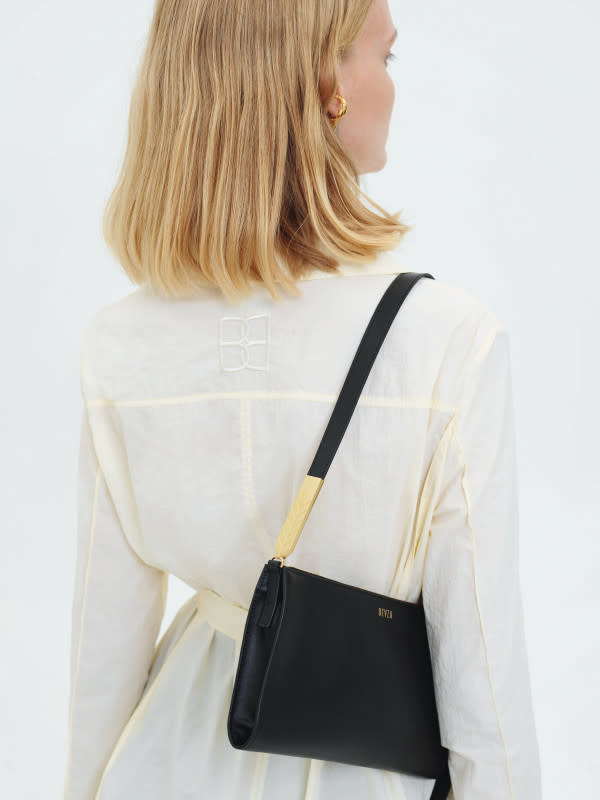
Photo: Courtesy of Bevza
Compared to traditional Ukrainian brands from that time, your aesthetic is very minimalist — is that how you would describe it?
It is, because it's interesting to play with pure things. I think it's much easier to do a lot of embroidery than to do something sharp, pure... And I love to do things I would call neo-classic, because it's a good investment. You can buy a coat, wear it and forget about it for a year or two, then pick it up again from your wardrobe and still wear it.
Aside from making pieces people can keep in their wardrobes for a long time, what's your approach to sustainability or social responsibility?
I'm a practical person. My wardrobe is very — I wouldn't say small, but thoughtful. And that's the same attitude I propose. I think the approach to sustainability, it grew much, much more when I gave birth to my first child. I started to research how to implement recycled materials.
We do a lot of knit work with recycled wool, and it's not hard. There are factories that produce it professionally, and I always encourage my colleagues to join this movement. There are yarns with a really good quality [made] of recycled plastic bottles. There are yarns that we use from recycled wool blends. There are yarns of recycled denim, as well as huge [sources of] deadstock fabrics around the world, like LVMH's Nona [Source] — huge warehouses where you can take great fabrics for your production or zero-waste technology. It started from scratch, but now it's a constant part of the brand. We just work within these terms as much as we can.
You started showing in New York in 2017. What made you decide on New York Fashion Week, as opposed to Europe or somewhere else?
In terms of Ukrainian Fashion Week, I'm also grateful for this period because it was a great practice for me, for my self-confidence to proceed. I was invited to [show at] Tbilisi Fashion Week, and they invited foreign journalists — that's how people from abroad saw me, what I'm doing.
After that, I understood that I should apply to a major fashion week. I didn't consider Milan or London this time. Paris is so full of French brands... I don't know why everybody wanted to get into Paris.
New York is different. I would say it's always fresh. Of course, it's far away, but I just thought about New York. That's how it came. [Now] people see us in terms of New York Fashion Week, so they think we're an American brand.
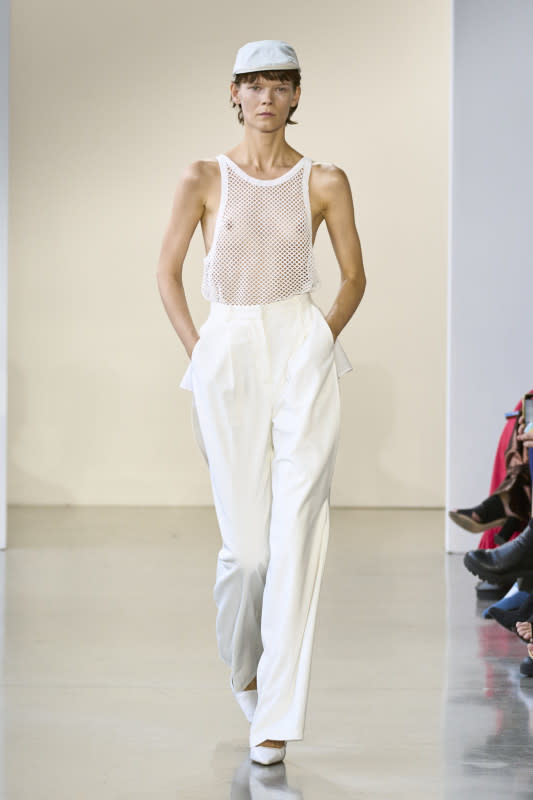
Bevza Spring 2024. Photos: Launchmetrics Spotlight
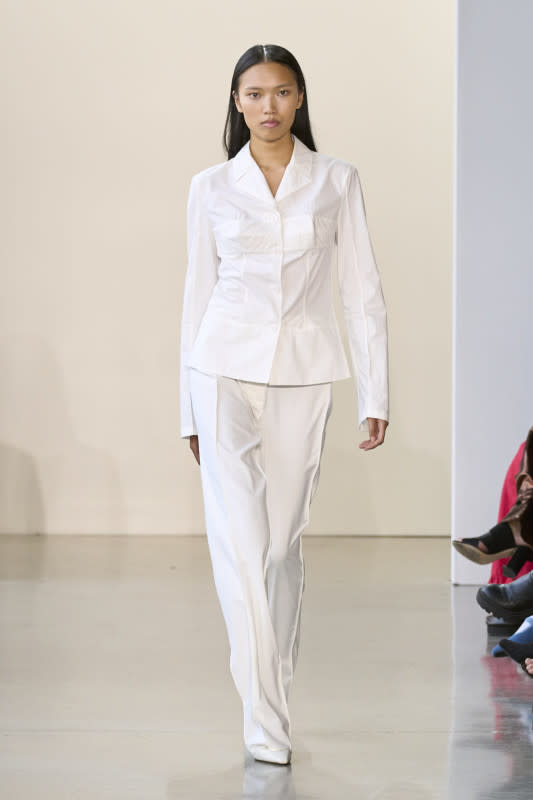
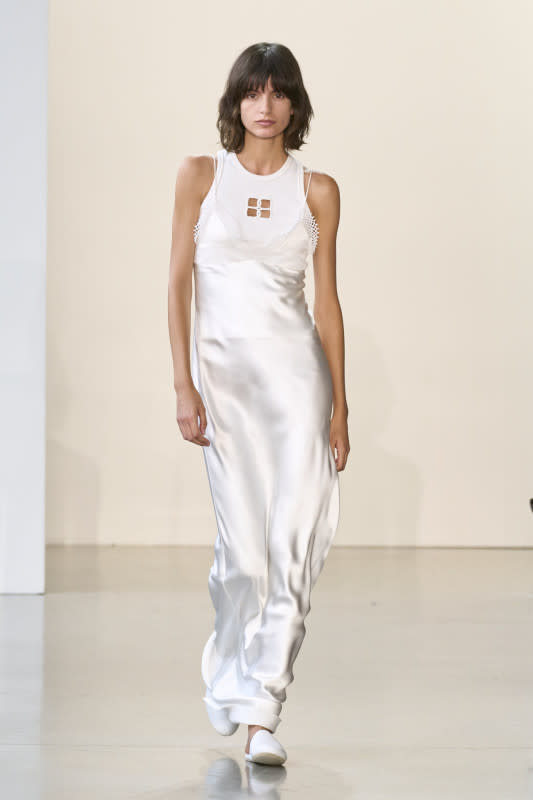
How have you seen the Ukrainian fashion landscape evolve back home since you started your brand?
I would concentrate this question on the personalities and the designers. There are really talented people and potential labels over there. It's a very, very hard period now for Ukraine, because we're in literal risk still.
What has it been like navigating that?
When war started, we stopped for a while, because we just didn't understand what to do. We just had a [group] chat, and every morning [asked], 'How are you? Are you okay?' But then people started to write me, 'We have to go on. Because when we sit and do nothing, it's just more depressing.'
After a couple of months, the factories in Ukraine started [to open]. We just can't sit and wait for something — that's the [mindset of Ukrainians]. Not all the people want to leave Ukraine. Mainly people with children, of course, take them out of Ukraine to some safe territories. But the industry is working, and it was very important for me to keep a lot of production in Ukraine in order to maintain this part of the economy, especially now. So all the spikelets that we do — they basically also saved our business during the war — we produce in Ukraine.
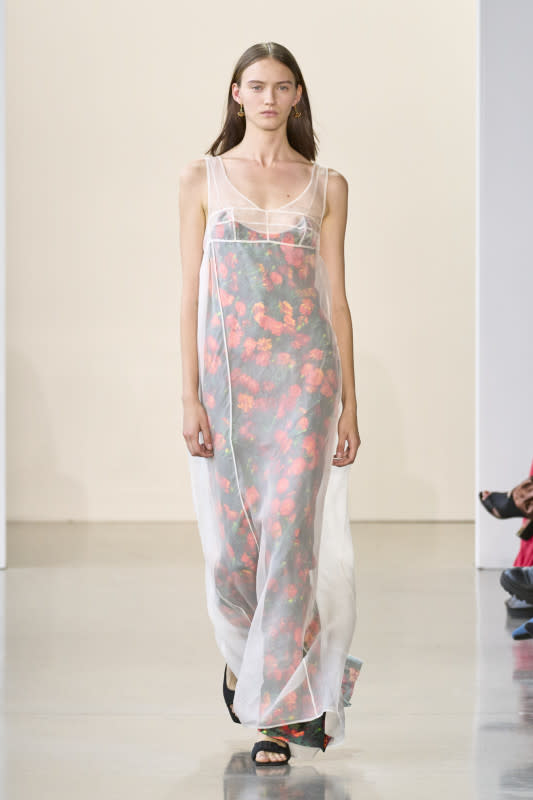
Photo: Launchmetrics Spotlight
What has helped you stay strong and keep things together through this conflict?
We didn't invade Russia. Ukrainians, we've gotten so angry because it's not the first time they wanted to take our homeland. I had a very peaceful life in Ukraine. Everything was established with my family and kids in schools. [Russia] always wanted to mute our nation and culture. I felt that, as a visual person, this is my responsibility, to share these visual stories, to tell [others] about the existence of our nation.
It actually empowered me a lot [to keep working], because I'm not a French designer or a British designer — I'm a girl from Ukraine, and this is my part. Everything just came out very naturally. I'm not saying that this is some heroic [act]. It's been a difficult period, but I just felt that this is the sense of my work now.
Can you share a bit about how you've been incorporating Ukrainian culture and symbolism into your designs and your shows?
I'm still doing minimalist outfits for real modern girls, but we implement the Ukrainian symbols in a very, I would say, accurate way. We don't do national costumes. We're just telling the symbolic stories and showing it in a way that could be very easily understood by people from abroad.
The spikelet is the main symbol of Ukraine. We started [using] this in Summer 2019, and now it developed into the bag line. You will see it in some other hardware and accessories, as well as the other symbols. For instance, we have a pendant with the Metro token — coins to get to the Kyiv Metropolitan. It's still a shelter for thousands of people, because when there's a raid alarm, everybody gets down to the subway.
In the Spring 2024 collection, there are the marigolds. In Ukraine, there's an old song like, 'Mama planted marigolds, and I had to leave my mom, and I miss her.' A classic song.
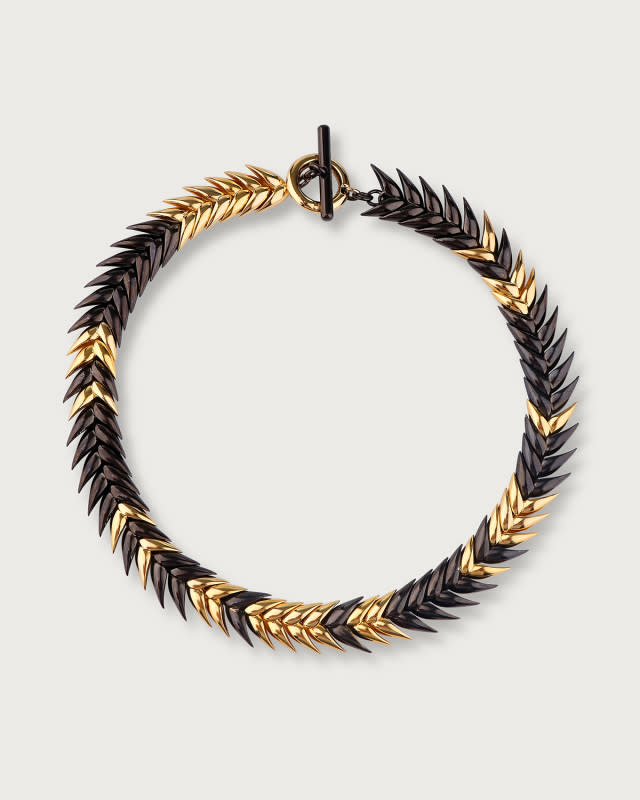
Bevza Spikelet jewelry. Photos: Courtesy of Bevza
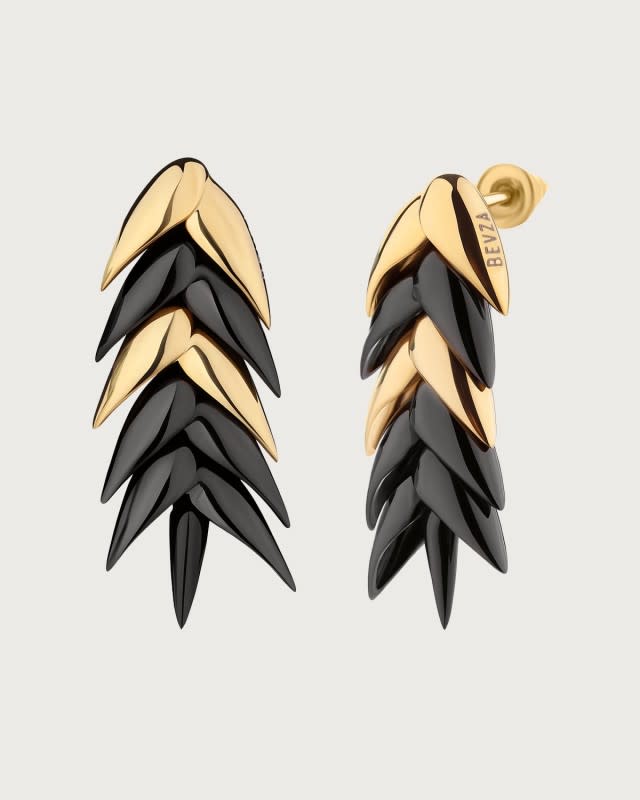
What's one thing that you would want people, outsiders, to understand about Ukraine right now?
Ukraine is a beautiful and fertile land. Kyiv is bigger than Paris, and it's a lovely city with really good food and really good climate, full of chestnut trees. It's a beautiful city. There are a lot of girls like me in Ukraine.
It's really bad still. We had a couple of months in Kyiv that were calm and quiet, but it's just that Russians took these couple of months to make another bunch of weapons. We hear their ballistic missiles almost every night.
My mom is still in Ukraine. She doesn't want to leave. She just told me, 'It's my country, I'm not going to leave.' We're trying to relocate my mom and mother-in-law... My husband is in Ukraine fighting. He's not a professional soldier, but that was his choice.
That's why it's very clearly for me, trying to talk about my country in a really good way. We're not going to the runway with some manifests or aggression. I'm showing the beautiful part of the peaceful country that I used to live in.
What are your main hopes for the future?
The biggest hope for my country is to win. And I believe in this, because truth has to prevail. We didn't invade Russia.
To be honest, my biggest dream now is to see my husband, because I haven't seen him since August. To see him, I have to go to Ukraine, and it takes 24 hours, at least, to get there because planes don't fly there.
But I'm very happy that the world now understands that Ukraine is just a country, a part of the world, and it exists. We pay a big price, for the world to know that this country exists on the map, but I'm still very thankful that we have a strong support from the U.S. It's crucial.
You've mentioned that even retailers, buyers and other designers have been really supportive when things have been delayed.
That amazed me a lot. We were about to deliver fall — it was all packed, but the warehouse is in Kyiv, in the capital, and the roads were blocked by the military, so we didn't have the access. We couldn't deliver for one month and a half. We got the emails that said, 'Guys, we will wait. We support you.' Some buyers asked, 'Are there any volunteer foundations where could we donate?' Texted me, 'How are you? Are you safe?' A lot of people just showed that they're humans. It's very nice.
Where do you see the brand five to 10 years from now?
If everything that's included in increasing and scaling the brand will fit my values, then I will go for a lot of things, because I love to create. When I understand that I have something to tell to the world, I will continue creating. I [like] stores, because, to be honest, I'm an offline shopper. I don't go shopping too often, but I love to touch things. I love to feel the aesthetic of the store. I love the high jewelry category as well.
Looking back on the brand so far, what would you say has been maybe the biggest milestone or something you're most proud of?
First, when I was a really local brand, the scouts of the Vogue Talent Contest found me in Ukraine somehow — I have no idea how — and offered me to take part. It was held by Vogue Italia, and I won it... It was one of those turning points when I felt that, 'Okay, things are getting professional.'
As a brand, I think that the creation of the spikelets and this reaction of the community... We didn't even do a lot of advertising. The product started to sell itself. Now, I'm very proud that the American community also joined to buy the spikelets. I see the orders in Tennessee or Texas or Virginia.
In Ukraine, there are a lot of copies now. We're proud of making this market work, because a lot of Ukrainian brands have started to popularize within this past year and a half. It's a good trend. I think we've pushed this wave in Ukraine to develop.
The start of New York Fashion Week was a turning point for me. Then, this year, [attending the] Met Gala — it's a very historical happening for Ukraine, because I'm the first Ukrainian woman ever attending the Met Gala. And my plus one was a Ukrainian model from Crimea, the part that's occupied by Russia now.
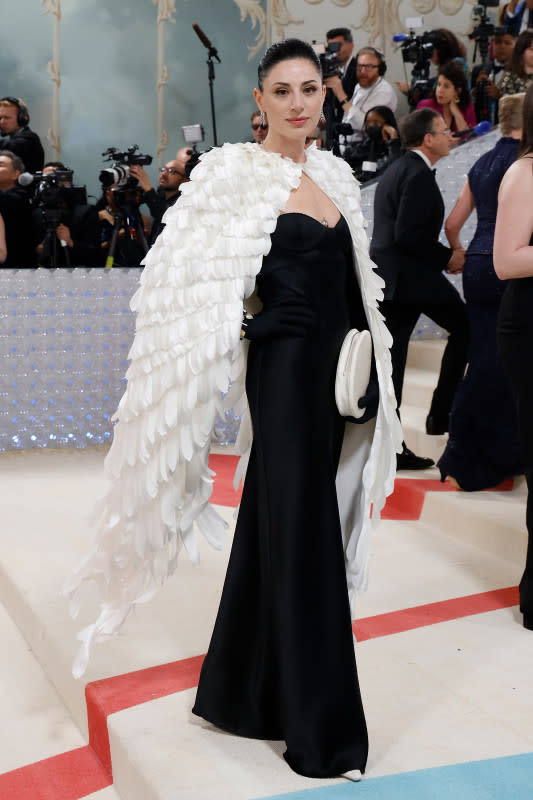
Photo: Taylor Hill/Getty Images
It was interesting to see you attending with Demna, because you don't always see designers supporting other designers so publicly.
Demna was forced to leave Georgia when Russians invaded. He knows exactly what happened to me. I remember we were sitting at the Met Gala together and were discussing how I used to go in the summer with my grandparents to Georgia. It was lovely, because Georgia is beautiful and the Black Sea is over there... Then, one summer, my granny told me, 'We cannot go there anymore, because there was war.' We were remembering these times with Demna. I think the support is [because] he knows what we're coming through, because he faced the same.
What advice would you give someone who wants to follow in your footsteps or start a fashion line?
Really [ask yourself]: What do you have? Do you really have something new and important to tell to the world? How would it look visually? In the end, all the brands that keep our attention or interest [have] something specific they're showing. It might be a visual shape or an idea or the sustainable part, but I think this vision must be there from the very beginning. It crystallizes during the development of the label, but the general vision has to be from the very beginning, I think.
Is there anything else you wanted to mention?
I just want to wish everybody to live a peaceful life. That's really very precious thing.
This interview has been edited and condensed for clarity.
Never miss the latest fashion industry news. Sign up for the Fashionista daily newsletter.


